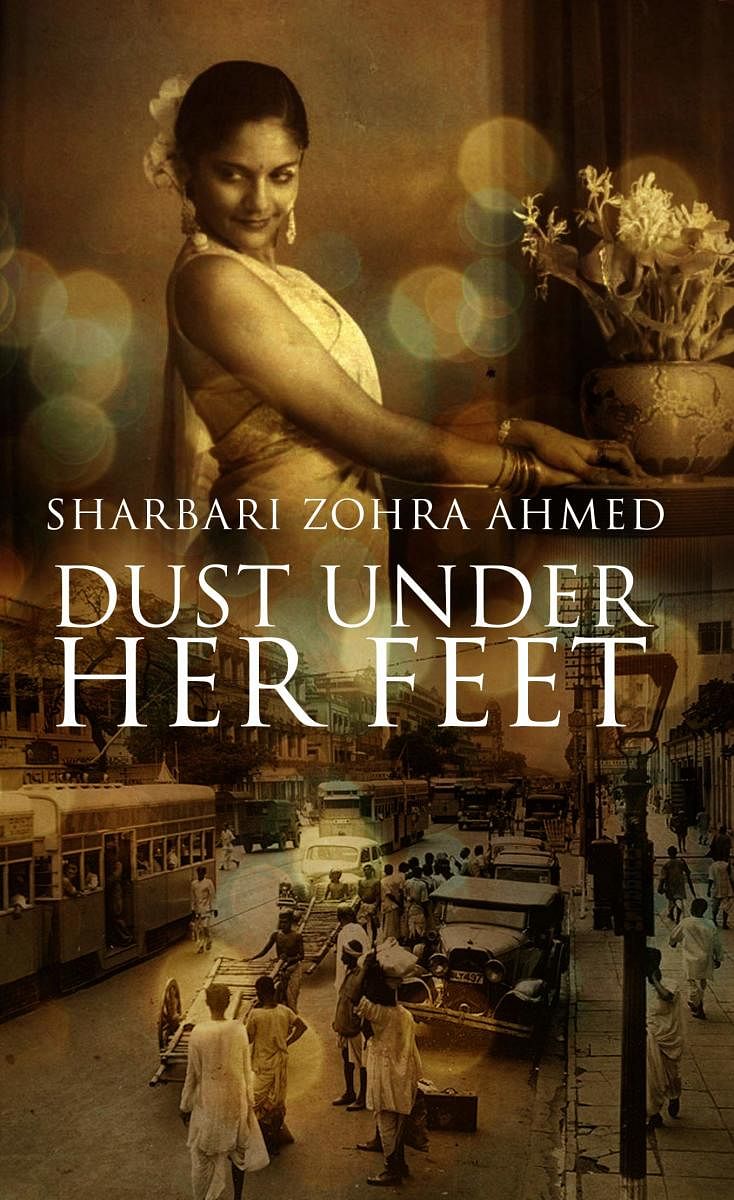
Calcutta of yore was the best city for lovers. The very ambience would make one fall in love...”
— Observed a British Army officer, posted at Fort William during the Second World War.
Dust Under Her Feet, the debut novel by Sharbari Zohra Ahmed, depicts the various facets of life in Calcutta during the politically volatile years of the 1940s under the colonial rule. It is the revelation of that critical phase of time when on one hand, the oppressed natives take up cudgels against the despotic Raj of the Britishers and make their all-out endeavours to break from the fetters of subjugation, and on the other, they have to bear the brunt of the Second World War foisted upon them by their brutal rulers.
In the ambience of palpable belligerence, love begins to blossom between the two chief protagonists, Lt Edward Lafaver and Yasmine Khan, the proprietor of Calcutta’s famous dance bar ‘Bombay Duck’ around whom the main plot revolves.
What makes the work stand out is the extensive research the author conducts by delving deep into the layers of history. But she meticulously refrains from overloading the book with mere historical facts and thus consummately retains the beauty of a well-delineated fiction. Yasmine, the central character with the coterie of her spellbindingly beautiful girls, represents the courtesan culture of the bygone era which the colonisers both detest and long for. As an astute businesswoman, this head concubine trains her girls in the art of coquetry and converts her club into a perfect place where the war-weary soldiers throng to drown their harrowing memories of the ongoing combat in Burma. Falling in love with Edward Lafaver gives a new meaning to Yasmine’s previously meaningless and hollow life. The readers are conferred with ample opportunities to traverse through the mindscape of the vulnerable bar dancers, concubines and prostitutes.
Undeniably, no woman would like to dance to the tune of a man and become an object of his mere amorous gratifications. Women like Patience (the most charming dancer at the Bombay Duck) nurture the dreams of having children and yearn to bask under the comforts of a blissful family but this sanctimoniously puritan society derives sadistic pleasures in ostracising them. The ghastly episode of Patience’s abortion testifies the fact that the women of the concubine community cannot mingle with the mainstream and thus have to live and die on the periphery. Though the narrative of the book is woven around the times of pre-independence, it holds its relevance in the present times as well. The sexual assault on Radhika, one of the girls from Bombay Duck, is akin to the Nirbhaya rape case of 2012. The victims are the same vulnerable women, only the victimisers have changed. On top of it, we hardly bother to take care of the victim and every occurrence of rape is nonchalantly cold-shouldered and disposed of in a jiffy.
The author also takes a dig at the evil of the caste system by presenting many more poignant episodes that rend every sensitive heart. Much to our chagrin, this social scourge does not end with the barbaric British regime as an egalitarian society is still a distant dream in India. The colonisers have, undoubtedly, held the natives in low esteem and always looked down upon them, but the so-called upper caste natives within the Indian society have also been unduly hostile to the individuals like Radhika from the Dalit community.
What comes as a relief amidst the blitzkrieg bombing of Calcutta by the Japanese is the abiding love story of Edward and Yasmine. Again the prudish and parochial-minded will condescendingly call the love between a married man and a concubine an act of moral deprivation, but true love knows no such narrow considerations and defies all the ossified societal norms.
Though a debutante, the author is not a mere pen pusher. She has a knack for spinning the yarn and sketching flesh and blood characters. Adhering to the three unities expounded by Aristotle in his magnum opus Poetics, the writer has skillfully stitched the plot. Despite bordering on diverse sub-themes and dealing with the gamut of human emotions, she does not leave any thread loose and untied. All the characters have been developed with the utmost finesse in order to make them appear probable and lifelike. It is indeed worth reading this book that transports the readers in particular into the dusty lanes of Calcutta of the 1940s and broadens their perspectives about life in general.
Deccan Herald is on WhatsApp Channels| Join now for Breaking News & Editor's Picks